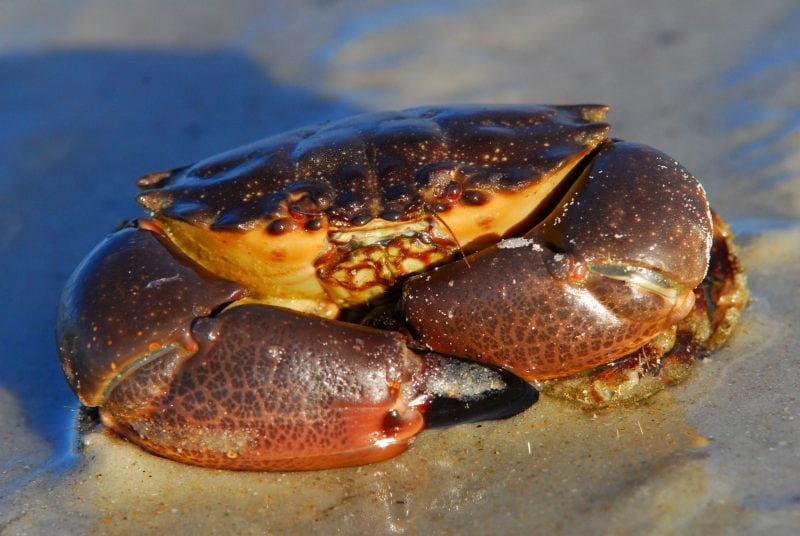
Many coastal watersheds have suffered from decades of urbanization which has diverted stormwater, carrying nutrient pollution, into coastal ocean waters. The influence of land-based runoff will likely accelerate the local rate of ocean acidification — decreasing seawater pH — in many coastal areas. Worldwide, oceans are acidifying and warming due to excess atmospheric carbon dioxide, and models forecast a 2-4°C increase in seawater temperatures by the end of the century. Understanding how these simultaneous stressors will affect coastal marine species, specifically those with high economic value, is critical.
The commercial stone crab fishery is a multi-million dollar per year industry in the southeastern United States and the Caribbean; however, in recent years, annual catches have declined in some locations. Despite their economic importance, few studies have assessed the tolerance of stone crabs to changing environmental conditions, and no studies have determined how human-made stressors may impact the future sustainability of stone-crab populations.
To help resource managers preserve important species, scientists must determine their tolerance to multiple man-made stressors throughout their larval development. Many marine invertebrates are often particularly sensitive to environmental stressors during their early life stages (i.e., embryonic and larval development). Our study was a collaboration among scientists from multiple Florida institutions that included Florida Institute of Technology, The University of Miami, The National Oceanic and Atmospheric Administration, and Mote Marine Laboratory. This was the first study to compare the survivorship, development, and morphology of stone-crab larvae exposed to four different treatments: 1) reduced seawater pH and elevated temperature combined, 2) reduced seawater pH by itself, 3) elevated temperature by itself, and 4) current seawater pH and the average summer seawater temperature.
We exposed stone crab larvae to the aforementioned treatments for their entire larval development (~28 days) and monitored their survivorship daily. We demonstrated that lower seawater pH alone reduced larval survivorship by 19%, while increased temperature resulted in a 36% decrease in survivorship. When we combined reduced seawater pH and elevated temperature treatments, larval survivorship decreased by 41%. Conversely, reduced ocean pH and elevated temperature did not appear to impact larval condition (lipid content) or morphology (size and shape) throughout development, which may indicate some degree of tolerance within the population.
These results demonstrate that stone crab larvae may be capable of tolerating moderate decreases in ocean pH, however, elevated temperature appears to have the greatest impact on larval survival. This is concerning considering seawater temperatures are projected to increase faster than pH will decrease over the next century. The projected increase in seawater temperatures forecast for the next 50-100 years may, therefore, serve as a potential population bottleneck by reducing the abundance of larvae and, in turn, the abundance of young adult crabs recruiting into the fishery. The sensitivity of stone crab larvae to elevated temperature could also prompt stone crab populations to shift their range northward as ocean temperatures continue to warm.
Nevertheless, the continuing increase in seawater temperature will likely threaten the future sustainability of Florida’s stone crab fishery. These results provide a starting point for resource managers to discuss proactive strategies for sustaining stone crab populations. Mote scientists continue to examine climate change impacts on stone crabs, with the goal of helping these tasty crustaceans weather the potential challenges ahead. You can read our publication by visiting: https://doi.org/10.1016/j.ecss.2018.02.021. Funding for this study was provided by two Mote Protect Our Reef Awards, Florida Institute of Technology, and by The Steinwachs Family Foundation.
These findings are described in the article entitled Warming and pCO2 effects on Florida stone crab larvae, recently published in the journal Estuarine, Coastal and Shelf Science. This work was conducted by Philip M. Gravinese (Florida Institute of Technology, Mote Marine Laboratory), Ian C. Enochs (University of Miami, National Oceanic and Atmospheric Administration), Derek P. Manzello (National Oceanic and Atmospheric Administration), and Robert van Woesik (Florida Institute of Technology).









